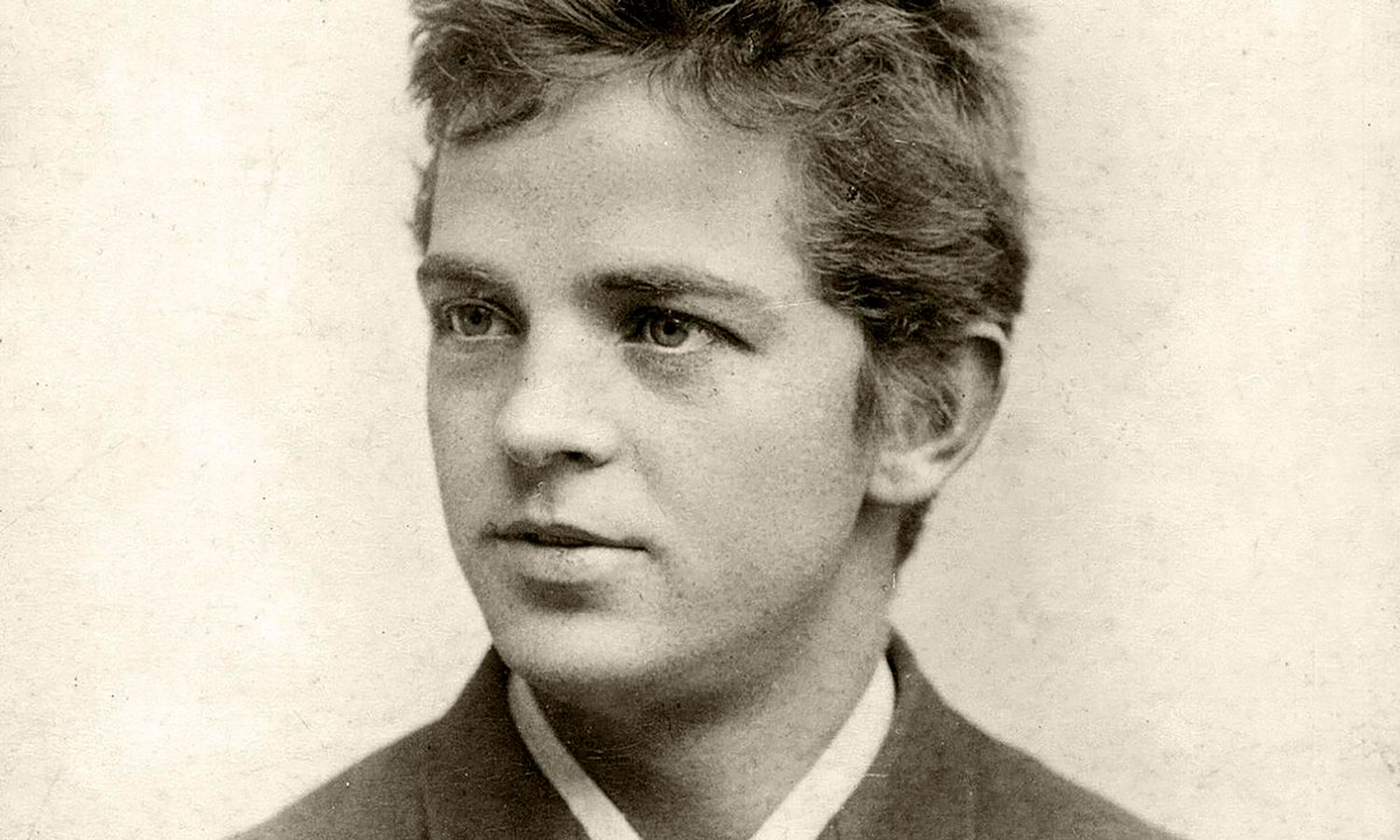Last years
Though he received warning signals both from both his body and his family, Carl Nielsen found it difficult – not to say impossible – to slow down his rhythm of work. If we look at the year 1928, for instance, we see that he began it by composing two of the three Piano Pieces, opus 59 (posthumous). These pieces are dated 15 January and 1 March respectively. The composition of this set of piano pieces was interrupted so that Nielsen could work on the Preludio e Presto for solo violin and the Clarinet Concerto. When these were finished he wrote the third and last piece for piano, which was completed at Damgaard on 6 November. By 14 April Christian Christiansen had already performed the first two pieces at the same concert in the Association for New Music which saw the first performance by Emil Telmányi of the piece for solo violin.
As time went on Nielsen spent more and more time away from Copenhagen. Thus he wrote from Damgaard to his former pupil Nancy Dalberg in May 1928:
“In Copenhagen it has become really difficult to be allowed to be the master of one’s own time. It is a terrible privilege to become older and therefore renowned in one’s profession, in other words, to become a professional authority! Terrible if one does not wish to behave as a fierce and unsympathetic boor – I have never loved living in Copenhagen and it is becoming worse and worse, though I must admit that it is in many ways a lovely city. If I were a foreigner I would prefer Copenhagen to almost any other city I know. But I am your archetypal ‘Danish Man’.”
On 2 November 1928 Carl Nielsen conducted a concert in Odense with a programme that included his music to “Aladdin.” After the concert H. Steenstrup Holbeck, specialist in H. C. Andersen and headmaster of Odense Cathedral School, approached him to ask whether he would be willing to compose a cantata for the celebration of the one hundred and twenty-fifth anniversary of Hans Christian Andersen’s birth. Nielsen could not quite envisage a cantata and was allowed instead to sketch the plot of a little festival play to which Sophus Michaëlis then wrote the text.
To start with all sorts of other obligations stood in the way. He had to deliver a cantata for the celebration of the centenary of the Technical High School on 30 August 1929. And for the inauguration of the first Arts Festival in the Copenhagen Forum on 12 October 1929 he had to write a Hymn to Art for soloists, choir and brass orchestra on a text by Michaëlis, which he also conducted in person. Besides, he conducted several concerts with both his own music and that of others in the course of the festival, which was the first of its kind. Its declared purpose was to give the public a survey of the last fifty years’ output in poetry, painting, sculpture and music.
Nielsen wrote most of the music for Andersen’s anniversary play, which was entitled “Amor and the Poet,” in April and May 1930, interrupted by a visit to Gothenburg for the twenty-fifth anniversary of the city’s symphony orchestra. After only three days of orchestra and stage rehearsals, the first performance of the play took place at Odense Theatre on 12 July. Nielsen, who conducted personally, was given an ovation and a laurel wreath.
In the spring of 1928 Nielsen attended a programme in the concert hall of the Glyptothek with the Palestrina Ensemble under the direction of Mogens Wöldike, who had founded this group six years earlier in order to perform Renaissance vocal polyphony. Nielsen expressed special interest in the motet Vox in Rama audita est by Clemens non Papa (ca. 1510-1555). Wöldike, who had studied musical theory with Nielsen, asked him to compose something for his Ensemble and suggested several texts. Yet it was Nielsen himself who, with the help of his wife Anne Marie, chose three Psalms of David, which he used in the Latin version on the same grounds that had led him to use a Latin text for Hymnus Amoris.
Nielsen renewed his acquaintance with the polyphony of the old masters, which he had previously studied in connection with Hymnus Amoris and “Saul and David.” Since then he had taken an interest in early music only once, when he had orchestrated and arranged the oratorio Jephtha by Giacomo Carissimi (1605-74) for a concert in the Music Society in 1922.
The three motets, which bear the opus number 55 and are dedicated to Mogens Wöldike and the Palestrina Ensemble, were composed over the summer at Damgaard and in Skagen. The first performance took place at the Glyptothek on 11 April 1930: “it is as if this master of ours, every time he sets to work, seeks a new subject, a new genre, and – as a kind of renewed trial of strength – increases his creative urge and artistic powers,” wrote Berlingske Tidende.
Organ music plays a quantitatively very small part in Nielsen’s output. He started composing for the instrument very late and created only one major work for it. The inspiration was not religious but far more his fascination with Renaissance and Baroque polyphony. But there was also an external motivation for it. In response to a challenge from Johannes Hansen, who was married to Thorvald Aagaard’s sister Inger, Nielsen wrote a collection of short preludes for the organ or harmonium in 1929. They were published the following year as his opus 51. In order to get into the style he had borrowed a series of older works for organ by Peter Thomsen, who was organist at Simeons Kirke. Through Mogens Wöldike he had been given access to the organ of the chapel in Christiansborg Castle, where he could sit and explore for himself the instrument’s potentialities.
Immediately after he had been appointed director of the Royal Danish Academy of Music at New Year 1931, succeeding his old friend, violinist Anton Svendsen, he left for Stockholm where “Saul and David” was being produced. Then duty called him back to Copenhagen. He could not leave for Damgaard until 17 February, where he worked concentratedly both on a short commissioned work for the fifthieth anniversary of the Cremation Society and on the completion of a big new work for the organ, which he called Commotio.
On 2 March he wrote to his wife: “Now my big organ work is completely finished, and I am happy with the result because it has been done with greater expertise than all my other works; I am sure I can judge that myself, but not how it will work out in spirit for it is very long and lasts about 22 minutes, I think. Bach’s longest piece for the organ (Prelude and Fugue in E minor) has 368 measures, mine has 511, so as far as length is concerned … ? Bach cannot be equalled! Yesterday I also completed the piece for the Cremation jubilee.”
On 24 April Peter Thomsen played this work in the chapel of Christiansborg for a circle of Nielsen’s friends, among whom were Emilius Bangert, who was to play it at the official first performance in Aarhus Cathedral on 14 August. Carl Nielsen interrupted his holiday to go to Aarhus.
Apart from that Nielsen spent that summer at Damgaard and in Skagen, where he sat for painter Sigurd Swane. His family begged him to go on a health cure but he insisted on going back to Copenhagen, where duty called him both at the Conservatory and at the Composers’ Association. But there were reasons other than duty, for he was taking part in the Royal Theatre’s rehearsals for a new production of “Masquerade.” There had been some trouble with some of the ropes during the dress rehearsal, and Nielsen had playfully hoisted himself up by the arms and fixed them. The following day he had a series of minor heart attacks but nevertheless overcame considerable discomfort, managing to sit through the whole of the first performance.
His condition did not improve in the days that followed, and on 1 October he was hospitalized on Eggert Møller’s initiative at the National Hospital. There, in the evening, on a crystal set with two headphones, Nielsen was able to listen to a concert of his own music given by the Danish Broadcasting Corporation. He should have been conducting it, but Emil Reesen had substituted for him and conducted the Radio Symphony Orchestra.
On the following day Emil Telmányi visited him and gathered that Nielsen had not appreciated Peder Møller’s performance of the Violin Concerto any more than Telmányi had; Møller had apparently been nervous or on bad form. In the course of the day Carl Nielsen’s condition worsened, and in the evening the whole immediate family gathered around his bed (with the exception of his son Hans Børge). He was sleeping most of the time, but woke up for a short moment and mumbled:
“You are standing here as if you were waiting for something.”
At ten minutes past midnight he passed away. The news spread swiftly. One of Denmark’s greatest sons was no more.
So many people wished to attend Carl Nielsen’s funeral that for lack of space it had to be moved from Holmens Kirke to Vor Frue Kirke (Our Lady’s Church), the Copenhagen Cathedral. The service took place on 9 October 1931 at 2 p.m. The invited guests were seated downstairs, while the others who wished to attend filled the side galleries. Many could not find a seat at all. Mogens Wöldike played the organ. All the music, including the hymns, was by Nielsen.
In Vestre Kirkegaard the coffin was lowered into the ground to music from the final chorale of the Wind Quintet played by the Chapel Royal’s Wind Quintet, and afterwards members of the Students’ Singers’ Association under the direction of Johan Hye-Knudsen sang Carl Nielsen’s Aftenstemning. Then Anne Marie Carl-Nielsen made a very personal speech in which she said:
“I want to thank both his older and his younger musical friends. All of them have enriched him, all of them have given him something. There is much for which to be grateful. And then I want to thank him for the nature that was his. It never stagnated, was always on the move, it was running water. He enriched those around him. Lastly I want to thank the Danish nation because it has sung his songs!”
Anne Marie Carl-Nielsen survived her husband by fifteen years. She too is buried in the grave in Vestre Kirkegaard, together with their son Hans-Børge and their daughter Anne Marie Telmányi.

